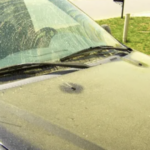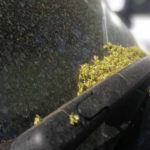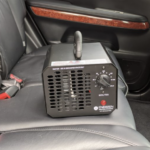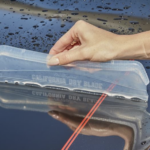What Is Paint Correction? A Complete Guide for Car Owners
Maintaining a flawless car exterior is a challenge, especially when swirl marks, scratches, and oxidation dull the paint over time. This is where paint correction comes into play. It’s a professional detailing process that restores your vehicle’s finish, bringing back its showroom shine. But what exactly is paint correction, and how does it benefit your car? This guide will break down everything you need to know.
Understanding Paint Correction
What Is Paint Correction?
Paint correction is a meticulous process that removes imperfections from a vehicle’s paint surface. It involves polishing and refining the clear coat to eliminate swirl marks, light scratches, oxidation, and other surface defects. The goal is to restore clarity and depth to the paint, making it look as good as new.
Unlike simple waxing or polishing, paint correction actually removes defects rather than masking them. It requires specialized tools, such as dual-action polishers, rotary buffers, and various polishing compounds.
How Paint Correction Works
The paint correction process typically follows a multi-step approach:
- Thorough Cleaning – The vehicle is washed and decontaminated to remove dirt, grime, and old wax.
- Clay Bar Treatment – A clay bar is used to eliminate embedded contaminants that washing alone cannot remove.
- Paint Inspection – The surface is analyzed under specialized lighting to identify defects.
- Compounding Stage – A cutting compound is applied with a polisher to remove deep scratches and heavy imperfections.
- Polishing Stage – A finer polish is used to refine the surface and enhance the paint’s clarity.
- Final Protection – A sealant or ceramic coating is applied to protect the newly corrected paint.
Each step is crucial to achieving a flawless, mirror-like finish.
Why Paint Correction Is Essential
Restores a Vehicle’s Original Shine
Over time, environmental elements take a toll on your car’s paint. UV rays, rain, dirt, and even improper washing techniques contribute to a dull, hazy appearance. Paint correction removes these defects, bringing back the deep gloss and reflection of the original paintwork.
Removes Swirl Marks and Scratches
One of the most noticeable imperfections on a car’s paint is swirl marks. These fine scratches often result from improper washing and drying methods. Paint correction eliminates these marks, restoring a smooth and even surface.
Enhances Resale Value
If you plan to sell your vehicle, first impressions matter. A car with a flawless, glossy finish looks well-maintained and commands a higher resale value. Paint correction is an investment that can pay off when it’s time to sell.
Prepares the Paint for Protection
Many car owners apply ceramic coatings or wax to protect their paint. However, applying these coatings over a scratched or dull surface locks in imperfections. Paint correction ensures the paint is in pristine condition before sealing it with protection.
Common Paint Defects That Paint Correction Fixes
Paint correction can address a variety of issues, including:
- Swirl Marks – Caused by improper washing techniques.
- Light Scratches – From brushes, automatic car washes, and minor abrasions.
- Oxidation – Faded paint due to prolonged sun exposure.
- Water Spots – Mineral deposits left behind after water evaporates.
- Holograms – Improper polishing techniques leaving a hazy effect.
- Etching from Bird Droppings and Bug Splatter – Chemical damage that eats into the clear coat.
The Different Levels of Paint Correction
Paint correction isn’t a one-size-fits-all process. The level of correction needed depends on the severity of the paint defects.
One-Step Paint Correction
This is a light correction that uses a polishing compound to remove minor imperfections. It improves the paint’s gloss and is ideal for newer vehicles with minimal defects.
Two-Step Paint Correction
This method involves both compounding and polishing. It removes moderate swirl marks and light scratches, providing a more refined finish.
Multi-Step Paint Correction
For heavily damaged paint, a multi-step correction is necessary. This process involves several stages of cutting, polishing, and refining to restore a near-perfect finish.
DIY vs. Professional Paint Correction
Can You Perform Paint Correction Yourself?
While it’s possible to perform paint correction at home, it requires the right tools, products, and experience. Mistakes can result in burning through the clear coat, causing permanent damage.
DIY paint correction is recommended for minor defects, but professional services are best for more extensive restoration.
Why Choose a Professional?
Professional detailers have the expertise and equipment to achieve flawless results. They use:
- Specialized Lighting – To identify even the smallest imperfections.
- High-Quality Polishing Machines – Ensuring even correction without excessive paint removal.
- Premium Compounds and Polishes – For optimal clarity and shine.
- Proper Techniques – To avoid causing additional damage.
How to Maintain Your Paint After Correction
Once your paint has been corrected, proper maintenance is essential to preserve its flawless look.
1. Wash Using Proper Techniques
- Use the two-bucket method to prevent swirl marks.
- Opt for a pH-neutral car shampoo that won’t strip protective coatings.
- Dry with a microfiber towel to avoid scratching the surface.
2. Apply a Protective Coating
- Wax or Sealant: Provides short-term protection and enhances shine.
- Ceramic Coating: Offers long-lasting protection against contaminants and UV damage.
3. Avoid Automatic Car Washes
- Automatic brushes can cause micro-scratches and swirl marks.
- Hand washing is the safest way to keep your paint in pristine condition.
Is Paint Correction Worth It?
If your car’s paint has lost its shine, paint correction is an excellent investment. It restores the original beauty of your vehicle, increases resale value, and provides a smooth foundation for protective coatings. Whether you opt for a professional service or attempt a DIY approach, the benefits of paint correction are undeniable.
Final Thoughts
Paint correction is more than just polishing—it’s a complete restoration process that brings your car’s paint back to life. By removing defects and restoring gloss, it ensures your vehicle looks its absolute best. If you want a showroom finish, investing in paint correction is one of the best decisions you can make for your car.
Now that you understand what paint correction is and how it works, you can decide if it’s right for your vehicle. Whether you go the DIY route or seek professional help, the results will be well worth the effort.
Leave a Comment Cancel Comment
Book Orlando Mobile Detailing
Search
Latest Post
-
 The Cost of Neglect: Why Regular Aircraft Detailing Saves Money in the Long Run
February 14, 2025
The Cost of Neglect: Why Regular Aircraft Detailing Saves Money in the Long Run
February 14, 2025
-
 Why Car Washes Aren’t Enough to Combat Pollen Damage
February 13, 2025
Why Car Washes Aren’t Enough to Combat Pollen Damage
February 13, 2025
-
 Orlando’s Pollen Problem: When Is It the Worst and How It Affects Your Car
February 13, 2025
Orlando’s Pollen Problem: When Is It the Worst and How It Affects Your Car
February 13, 2025
-
 How Ozone Generators Eliminate Stubborn Car Odors in Orlando
February 12, 2025
How Ozone Generators Eliminate Stubborn Car Odors in Orlando
February 12, 2025
-
 Why a Water Blade and Chamois Beat Towels Every Time!
February 9, 2025
Why a Water Blade and Chamois Beat Towels Every Time!
February 9, 2025
